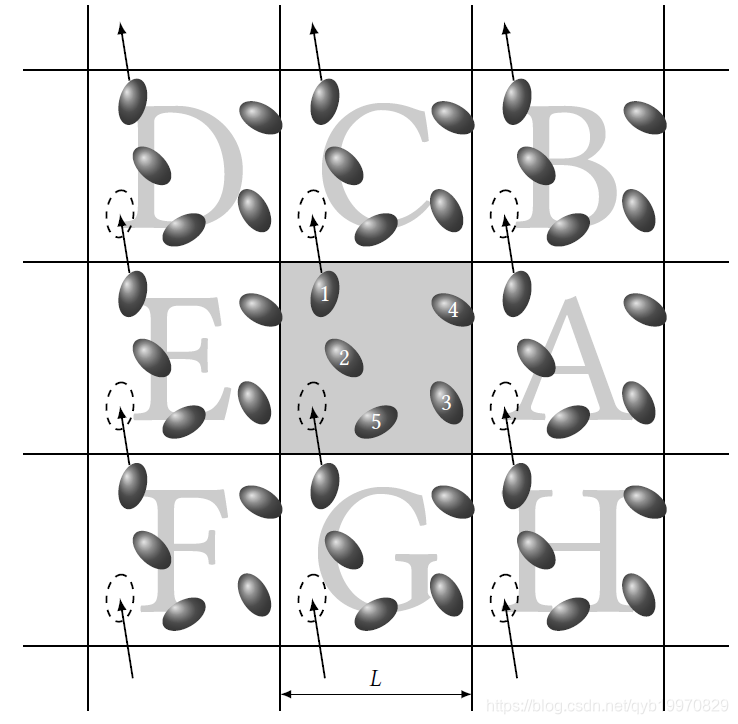所用系统
Windows 10 企业版
现用软件
其余软件
由于首先接触的是粗粒化相关分子动力学,所以对相关软件有过一些调研及使用,在这里推荐给大家:
- OCTA(粗粒化相关免费软件)链接: link
- J-OCTA(粗粒化相关商用软件)链接: link
都有GUI界面,但OCTA商用化后建模到仿真都方便了很多,也可以配合lammps,运算效率应该还是可以的。
优点: 跨尺度仿真软件,从全原子到有限元的结合,看过好几篇关于分子动力学和实验相结合的论文,详情见其官网。
Coarse grain modeling of polyimide copolymers.
Two-dimensional scattering patterns of polymers in elongated
polymer networks and composites.
缺点: 商用无破解;小众,国内没资源;交流只能通过固定BBS站点同日本开发人员进行技术交流(不过效率蛮高的,上午发基本下午就会回复)。J-OCTA在中国由西安和上海庭田科技代理,全套大概二十几万,一年也得五六万以上吧,仅可在一台电脑上使用。以上两个软件都是日本软件,国内无破解,下载需要到特定站点用学校edu邮箱注册,进行下载。
对此日本人还出了一本书Computer Simulation of Polymeric Materials,虽然是关于软件使用方面的介绍,但是里面涉及到的理论也是相通的,有兴趣的可以了解一下。
OCTA is software for simulating the behavior of polymeric materials in liquid, rubbery, and solid states. It was developed by a project of the Japanese Ministry of Economy, Trade and Industry. The aim of the project was to develop software that would be useful for the research and development of polymeric materials.
- Moltemplate(粗粒化)链接: link
是我最先用的软件,需要linux环境,可以在windows下的ubuntu子系统完成,由于当时对MD接触还比较少,粗粒化理解不够深,对这软件也只是简单使用过,后续进行粗粒化跨尺度应该还是会用到这软件,到时候再更新相关信息,不过值得一提的是由于是Lammps的工具包,所以执行后的文件可以直接作为lammps的输入文件,还是比较方便的。
相关书籍推荐
个人更倾向于外文书,并不是崇洋媚外,而是这玩意儿最早就是外国人做,目前国内的很多书籍都是翻译的外文,很多知识点可能因为翻译或者其他原因往往使得中文书读起来反而不如外文来的地道,下面就是我入门前期看过的一些书:
- 《Computer Simulation of Liquids》
也算是我第一本接触的外文书籍吧,读起来不会觉得累的,从分子动力学起源到现在的代码应用都阐述的很清楚,很适合入门,强烈推荐。
Early models of liquids (Morrell and Hildebrand, 1936) involved the physical manipulation and analysis of the packing of a large number of gelatine balls, representing the molecules; this resulted in a surprisingly good three-dimensional picture of the structure of a liquid, or perhaps a random glass, and later applications of the technique have been described (Bernal and King, 1968). Assemblies of metal ball bearings, kept in motion by mechanical vibration (Pieranski et al., 1978), have been used as models of granular materials and show some analogies with molecular systems (Olafsen and Urbach, 2005). Clearly, the use of large numbers of macroscopic physical objects to represent molecules can be very time-consuming; there are obvious limitations on the types of interactions between them, and the effects of gravity are diffcult to eliminate. However, modern research on colloidal suspensions, where the typical particle size lies in the range 1 nm–1000 nm,with the ability to manipulate individual particles and study large-scale collective behaviour, has greatly revitalized the ffeld (Pusey and van Megen, 1986; Ebert et al., 2009; Lekkerkerker and Tuinier, 2011; Bechinger et al., 2013)

2. 《Computer Simulation of Polymeric Materials》
重点介绍了OCTA软件力COGNAC, SUSHI, PASTA, MUFFIN, KAPSEL模块的使用以及相关的案例,不同模块也有相应的理论介绍,不过全原子较少,更多的还是介观往宏观的趋势,但都是互通的,其中涉及到聚合物的粘弹性,结晶,复合,交联等等,这些基本都是他们已经发表了论文的东西。


以下的书我只是简单浏览过,不过有人给我推荐过,感兴趣的也可以看看,不过聚合物,流体相关的还是看一二两本吧。
3. 《Understanding Molecular Simulation: From Algorithms to Applications》
4. 《Statistical Mechanics: Theory and Molecular Simulation》
5. 《The Langevin and Generalised Langevin Approach to the Dynamics of Atomic, Polymeric and Colloidal Systems》
其余推荐
- 外籍书籍下载 链接: link,以上的书籍或者其他的专业书籍都可以在上面下载,导师安利的,感觉还不错;
- Lammps相关的公众号:LAMMPS爱好者,很便于大家快速入手Lammps;
- QQ群:58438486,397981984,698671585,有问题可以入群大家讨论;
- 文献检索方面,个人首先建议将浏览器搜索引擎改为Bing, 可以翻墙直接谷歌,百度能力毕竟有限。
第一次写博客,写的不好请见谅,其中的软件安装以及具体的命令教程我在这里没有涉及,后续慢慢记录。如果有什么建议的话可以在下面留言,什么方面都可,希望和大家一起进步。
